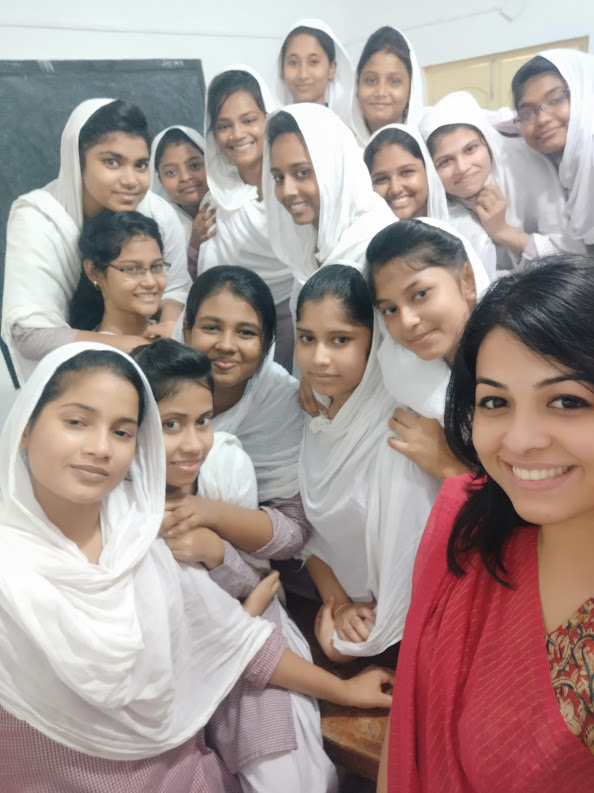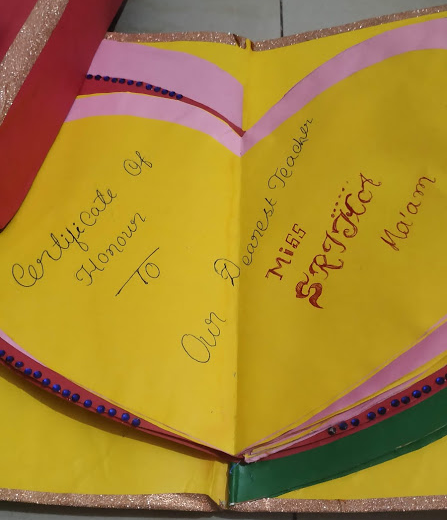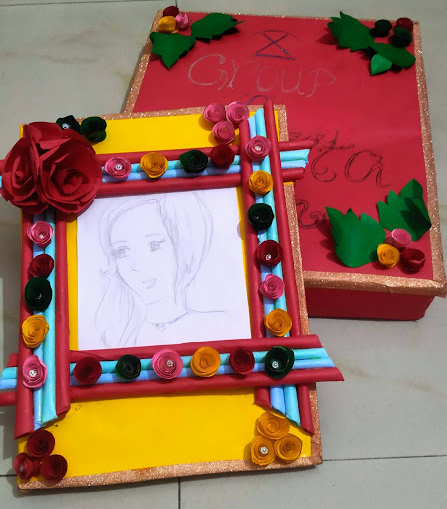The Real ‘Skype’ Class (Part II)
Part I – A Virtual Learning Experience
By Srijita Chakraborty
Despite the government’s best efforts to provide free education, a crop of private institutes or ‘missions’, providing education at a price and with teachers far less qualified than those in government schools, have sprung up across West Bengal and are immensely popular among the Muslim community. Khadijatul Kubra Girls’ Mission (KKGM) is one such mission. So, what makes these missions so sought-after?
While minority students are seemingly at par with others in terms of the education, they receive in government schools, they fall behind in other aspects. Hindu students are able to easily supplement their school education with tuition classes. However, Muslim students struggle to find good tutors, as the level of education in their localities are generally low. The problem is compounded for girls, who cannot travel to far-flung areas for classes late in the day.
Missions such as KKGM, Al-Ameen and Azad Hind are a panacea for them. These institutes are not registered with any educational board and hence, cannot conduct examinations. Students are enrolled with a neighbouring, registered school. They attend classes and reside at the mission, visiting the registered school only to write their board examinations – Madhyamik or Madrasa, as the case may be.
Unlike Al-Ameen Mission and Azad Hind Mission, KKGM is a mission exclusively for girls. Situated in the Bainan village of the Howrah district in West Bengal, it was founded in 2004 and is funded by the Khadijatul Kubra (R.A.) Education Trust. The mission prides itself in providing convenient, quality education to Muslim girls, many of who may have otherwise dropped out. Students who can afford it, pay a monthly fee of INR 4000, which covers tuition, food and lodging. For needy students, and there are many, this fee is waived off. The mission caters to some 400-odd students in classes 6-12. Students are admitted on the basis of an admission test. The medium of learning is Bengali. The instructors at the mission are mostly graduates – Muslim women who have themselves studied at one of these missions.
I visited KKGM earlier this month. It is a single L-shaped building, overlooking a field. The building has two floors. One section houses the classrooms, the four science laboratories – physics, chemistry, biology and geography – and a computer centre, which was funded by the Ann Foundation. The equipment in these labs have been acquired either through donations or funds donated by the community. One of the classrooms has been converted into a library, which houses a humble collection of fiction and non-fiction, mostly in Bengali.
Large, nondescript rooms line the other section of the building. These are the dormitories. Each room is packed with a row of single metal beds, pressed against each other. The beds are all the same, save for the distinctive floral-patterned bedspread on each. Above the beds are rows of clotheslines, an array of garments hung on them. There are no cupboards.
A lone girl sits on her bed hunched over her book, swaying back and forth as she mechanically chants her lessons. I notice the absence of desks and chairs. A couple of beds away, another girl lies coughing and sniffling.
On the left of the building is a small shanty where food is served four times a day. At mealtimes, the girls line up with their plates, the queue extending far beyond the periphery of the shanty. Inside, there are a few benches where the girls eat their food. Some girls come back to their classrooms after collecting their meal and eat in groups at their desks. The food served is both of good taste and quality. A usual meal comprises of rice, vegetables, lentils and at least one non-vegetarian item, I’m told.
A little ahead of this food-hall, is another small structure, the namaz room. Girls sit scattered around the room, some with their eyes closed. A pile of Qurans lies at the front end of the room; the girls are faced towards this pile as they chant their prayers. They perform the namaz five times a day, my students tell me. They can do so at their own convenience.
After a tour of the school, my students take me to a classroom, smaller than the rest, with a laptop placed on a table at the front. This is their ‘Skype classroom’, they announce. They ask me to go to the front of the class and take a ‘real Skype class’, taking their seats. With barely contained glee, they repeat the introductions they had made in our very first Skype class, pausing after each sentence to giggle and exclaim, ‘Ma’am, are you really here? You’ve come out of the laptop – it’s magic!’

Over the next hour or so, I learn more about them. I learn that they’re incredibly creative – evidenced by a beautiful card they made for me. I learn that Taniya and Nargis are great singers. They belt out Hindi numbers, both old and new, with surprising ease. Salma dances like a pro, but this was neither the time nor the place for a dance performance.


I learn that most of them want to be doctors, some nurses, a few lawyers. But Afrin will be a professor of English Literature, with a research focus on Shakespeare. Afrin also loves to play football and is an ardent Messi fan. Football, however, does not feature in the sports curriculum at KKGM and hence, she resorts to playing badminton. They play sports in the field out front, mostly Kabaddi.
I learn that they love it here at KKGM, even though they must do all their chores and live 40 girls to a room. They enjoy being with their friends, a simple pleasure which probably would have been denied to them had they stayed home. But they miss their families. Their families are allowed to either call or visit them on Sundays. Not everyone can make it every Sunday as they live far away.
I learn that they get sad on Sunday evenings, once the calls and visits are over. But then, they remember that they have their Skype class at 7 pm and cheer back up. I learn how much the Skype class, barely an hour’s commitment from me, means to them – it is their only escape into the outside world for months at a stretch. I learn how humbling it is to be awoken to the privileges that one takes for granted.
AUTHOR
Srijita Chakraborty is a Senior Research Specialist with Gartner. She lives in Gurgaon. When she is not at work, Srijita likes to read about innovative ways to keep her class engaged and writes about her personal experiences in her blog.


Great Initiative taken at the grass root level. Especially for the girls, who are on the darker side, when it comes to pursue their education. These missions are bridging a wider gulf by bringing a large share of people from the bottom of the pyramid together.
your school is very beautiful. Good luck